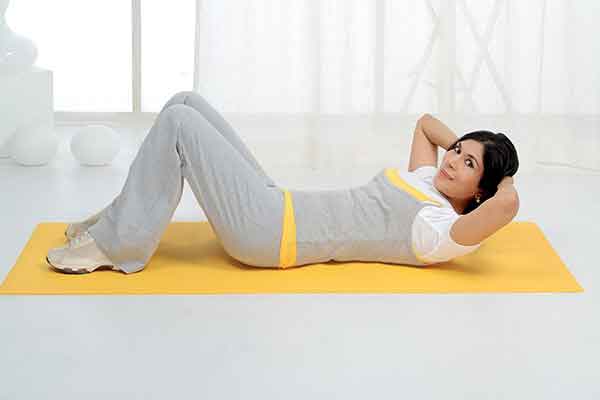The Fundamental Role of Core Exercises in Your Workout Routine

Welcome to a comprehensive exploration of core exercises and their intrinsic significance in your workout regimen. In this in-depth whitepaper/blog, we’ll dive deep into the world of core workouts, revealing their vital role in enhancing strength and stability. Whether you’re a novice to the fitness realm or a seasoned gym enthusiast, understanding and effectively incorporating core exercises can have a profound impact on your overall physical well-being. Join us on this informative journey as we shed light on the importance of core exercises and offer practical insights for seamlessly integrating them into your fitness routine. Together, we’ll unveil the keys to achieving a healthier, more formidable you.
Why Focus on the Core Exercises?
Before we delve into the “how,” let’s understand the “why.” The core is your body’s powerhouse. It includes not just the abdominals but also the obliques, lower back, and deep pelvic muscles. A strong core improves your posture, reduces the risk of injury, and enhances your performance in various activities.
When your core is strong, your body can efficiently transfer energy from your lower body to your upper body. Whether you’re lifting weights, playing a sport, or doing everyday activities, a stable core will make a significant difference. Moreover, a well-defined midsection is an added bonus!
Incorporating Core Exercises into Your Routine
Warm-Up: Begin your workout with a dynamic warm-up to prepare your core and prevent injuries. Incorporate movements like leg swings, torso twists, and hip circles. These exercises will engage your core and increase blood flow to the muscles.
Planks: Planks are an excellent starting point for core strengthening. They engage the entire core and help you develop endurance. Start with a 20-30 second plank and gradually increase the duration as you get stronger. You can also try side planks to target your obliques.
Leg Raises: Lie flat on your back and raise your legs off the ground, keeping them straight. This exercise targets your lower abs and helps build strength in this often-neglected area. Start with 10-12 repetitions and increase gradually.
Russian Twists: Sit on the floor, bend your knees, and lean back slightly. Hold a weight or a water bottle and twist your torso from side to side. Russian twists are great for working the obliques. Aim for 12-15 reps on each side.
Hollow Holds: Lie on your back and lift your legs and shoulders off the ground, creating a “hollow” shape with your body. This exercise strengthens your entire core and is essential for maintaining stability in various activities.
Bird Dogs: Get on your hands and knees, extend one arm and the opposite leg while keeping your back straight. This exercise not only targets your core but also improves balance and coordination.
Dead Bugs: Lie on your back, raise your arms and legs toward the ceiling, and lower one arm and the opposite leg simultaneously. Dead bugs are fantastic for improving core stability and coordination.
Incorporate Core into Compound Exercises: When performing compound exercises like squats, deadlifts, and bench presses, engage your core to stabilize your spine. This not only adds a core workout but also protects your lower back.
Include Core Work in Cardio: While running or cycling, engage your core by maintaining a strong posture. This will help build endurance and improve your overall performance.
Yoga and Pilates: Incorporate yoga and Pilates into your weekly routine. These disciplines focus heavily on core strength and flexibility. You’ll not only strengthen your core but also enhance your mind-body connection.
Balancing Your Core Workout
Balancing your core workout is essential to avoid overtraining or neglecting specific areas. Your core consists of different muscle groups, so you’ll want to target them all for a well-rounded routine. Aim to include exercises that work your rectus abdominis (front), obliques (sides), transverse abdominis (deep core), and erector spinae (lower back).
Here’s a sample core workout plan that you can adapt to your fitness level:
Plank: 3 sets of 30-60 seconds
Leg Raises: 3 sets of 12-15 reps
Russian Twists: 3 sets of 12-15 reps (each side)
Hollow Holds: 3 sets of 20-30 seconds
Bird Dogs: 3 sets of 12-15 reps (each side)
Dead Bugs: 3 sets of 12-15 reps
Remember, the key to a strong core is consistency. Make core work a part of your routine, ideally 2-3 times a week. Over time, you’ll notice improved stability, better posture, and enhanced performance in various physical activities.
Additional Tips:
Nutrition: A balanced diet is crucial for building and revealing strong core muscles. Consume a variety of nutrient-rich foods to support your fitness goals.
Rest and Recovery: Ensure you get enough rest to allow your muscles to recover and grow. Sleep is a critical component of a successful fitness journey.
Stay Hydrated: Proper hydration is vital for muscle function. Aim to drink plenty of water throughout the day.
Progressive Overload: As you get stronger, progressively increase the intensity and difficulty of your core exercises to keep challenging your muscles.
Incorporating core exercises into your workout routine is a smart move for anyone looking to improve their fitness and overall well-being. A strong core isn’t just about aesthetics; it’s about functionality and health. So, lace up those workout shoes, grab your exercise mat, and start strengthening your core today. Your body will thank you for it, both now and in the years to come!





